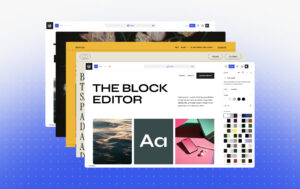Introduction
Color, a fundamental element of visual perception, holds immense power to influence human emotions, behaviors, and decisions. In the realm of web design, color psychology becomes a strategic tool to shape user experiences, build brand identity, and drive conversions. This article delves into the intricate relationship between color and human psychology, exploring how different hues can be harnessed to create compelling and effective websites.
Understanding Color Psychology
Color psychology is the study of how colors influence human perception, emotion, and behavior. It is rooted in the understanding that colors evoke specific associations and emotional responses. For instance, red is often associated with passion, energy, and excitement, while blue is linked to trust, calmness, and reliability. These associations are influenced by cultural, personal, and evolutionary factors.
The Impact of Color on User Experience
- First Impressions: A website’s color scheme significantly impacts the initial impression it creates. Warm colors like red, orange, and yellow can convey energy and excitement, while cool colors like blue, green, and purple tend to evoke calmness and trust.
- Brand Identity: Colors play a crucial role in establishing a brand’s personality and values. Consistency in color usage across different marketing materials reinforces brand recognition.
- Emotional Response: Colors can evoke specific emotions, influencing user engagement and sentiment. For example, using green can create a sense of harmony and growth, while black can convey sophistication and luxury.
- Call to Action: Colors can be used to draw attention to important elements, such as call-to-action buttons. High-contrast colors can increase click-through rates.
Color Meanings and Associations
While color psychology is complex and influenced by cultural factors, there are general associations commonly attributed to different colors:
- Red: Passion, energy, excitement, urgency, danger
- Orange: Enthusiasm, creativity, warmth, friendliness
- Yellow: Happiness, optimism, energy, attention-grabbing
- Green: Growth, harmony, nature, renewal, money
- Blue: Trust, reliability, calmness, security, professionalism
- Purple: Luxury, creativity, wisdom, royalty, mystery
- Pink: Femininity, compassion, care, sweetness, playfulness
- Brown: Reliability, earthiness, stability, warmth, comfort
- Black: Power, elegance, sophistication, mystery, formality
- White: Purity, innocence, cleanliness, simplicity, modernity
Color Combinations and Contrast
Creating effective color schemes involves understanding how colors interact with each other. Complementary colors (opposite on the color wheel) create high contrast, while analogous colors (adjacent on the color wheel) create harmony. Monochromatic color schemes use variations of a single color, while achromatic schemes rely on black, white, and gray.
Color Accessibility
It’s essential to consider color accessibility for users with visual impairments. Color contrast ratios should meet WCAG guidelines to ensure readability for people with color blindness or low vision.
Case Studies
- Netflix: The iconic red logo and color scheme evoke passion and entertainment.
- Facebook: Blue conveys trust and reliability, aligning with the platform’s purpose.
- Tiffany & Co.: The signature Tiffany Blue represents luxury and elegance.
Conclusion
Color is a powerful tool in the hands of web designers. By understanding the psychology of color and its impact on user experience, designers can create websites that not only look visually appealing but also effectively communicate brand messages and drive desired actions. Careful consideration of color choices, combinations, and accessibility is essential for creating successful and inclusive web designs.





